The Thermal Data
A quick reminder that all thermal tests were conducted with the Nemesis 280 GTX set up in Opti-Flow or “Maximize” as described by Hardware Labs to achieve maximum performance.
We did some comparison testing last year and found that Opti-Flow with Push/Pull fans (at all speeds) was most beneficial with a low flow rate of 0.5 GPM. At 1.0 GPM Opti-Flow still had a performance advantage, but by the time a 1.5 GPM flow rate was reached the two results were virtually the same with NON Opti-Flow even performing better at one data point. Note that this transitional point will vary depending on airflow. A radiator’s cooling is either limited by airflow or coolant flow. So if airflow is raised, then the point of diminishing returns on the coolant flow will also rise.
With Push Only fans the results varied with NON Opti-Flow performing much better with low speed fans. Opti-Flow had nearly caught up with medium speed fans and had taken over with high speed fans.

That testing was done on a Nemesis 360 GTX with 120mm GT AP-15 fans and therefore is not really comparable to our 140.x Nemesis GTX radiator test results. We found it interesting that “Maximize” did not always have the better performance though we are unsure why and providing the data here may prove useful to some readers. If interested in the details of this we would suggest reading the nemesis GTX 360 review thoroughly.
Unlike the 360mm testing, our 280mm radiator thermal tests are only conducted with a 1.0GPM flow rate.
A total of 6 tests were conducted at 1.0 GPM with fan speeds of 750 rpm, 1300 rpm and 1850 rpm being run in ‘Push Only’ and ‘Push/Pull’. All inclusive this testing takes between 40 – 50 hours of logging time (plus processing the data) to get the results that are presented.
Below is the final data results gathered from at least 5 data logging runs at the flow rate and fan rpm combination. The most stable 15 minute period from each logging run was used and then averaged with the other runs to obtain the data for the table below. A total of 16 temperature sensors are used in the thermal test chamber (8 air in, 2 air out, 3 water in, 3 water out). Each sensor takes a reading every second and is logged via a CrystalFontz unit.
The data in the table below is the averaged results of the logging runs which has then been used to create all the plots and tables there-after.
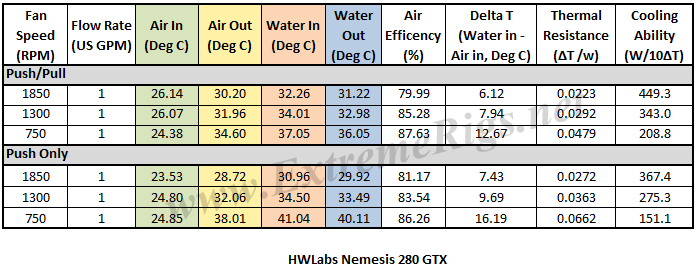 The performance metric of critical importance is the delta between the warm coolant temperature in and the cool ambient air temperature going into the radiator. Given that the system is well insulated and in equilibrium and we know the heat input to the system then we can also calculate a very important number. That number is the amount of power required to raise the coolant temperature by set amount. That amount is typically 1C or 10C. The latter is a more useful reference point.
The performance metric of critical importance is the delta between the warm coolant temperature in and the cool ambient air temperature going into the radiator. Given that the system is well insulated and in equilibrium and we know the heat input to the system then we can also calculate a very important number. That number is the amount of power required to raise the coolant temperature by set amount. That amount is typically 1C or 10C. The latter is a more useful reference point.
Let’s take a look at the Delta T results from the tests. Note that the extrapolation of the curve is much more sensitive to error than in the tested range.
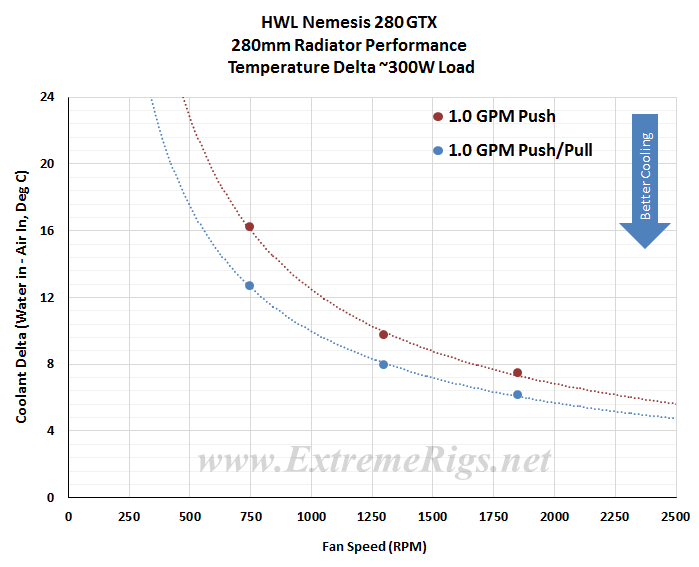 I was not too concerned about the actual delta numbers but instead the trend pattern. As we should expect, the deltas come down as the fan speed is increased. However, the Nemesis 280 GTX plot is interesting as it clearly shows convergence of the data lines as the fans speed is increased. Based on previous Nemesis GTX testing we are predicting that weak performance at Push Only 750rpm is the cause of wide gap on the 280 GTX’s Delta plot.
I was not too concerned about the actual delta numbers but instead the trend pattern. As we should expect, the deltas come down as the fan speed is increased. However, the Nemesis 280 GTX plot is interesting as it clearly shows convergence of the data lines as the fans speed is increased. Based on previous Nemesis GTX testing we are predicting that weak performance at Push Only 750rpm is the cause of wide gap on the 280 GTX’s Delta plot.
And for those interested, Delta comparisons for the Nemesis 280 GTX and Nemesis 360 GTX together.
Again actual temperature comparisons here are not of huge relevance but the trend lines are. It was nice to see the two models data lines tracked almost parallel to each other for each fan assembly type.
Delta T results (as above) are not always helpful when thinking about how many radiators you would need to cool your system. Instead it’s more useful to know the metric of W/Delta C. This metric is plotted below. It tells us how many Watts are dissipated by the radiator when the coolant rises 10C above ambient temperatures. (W/10 Delta T):
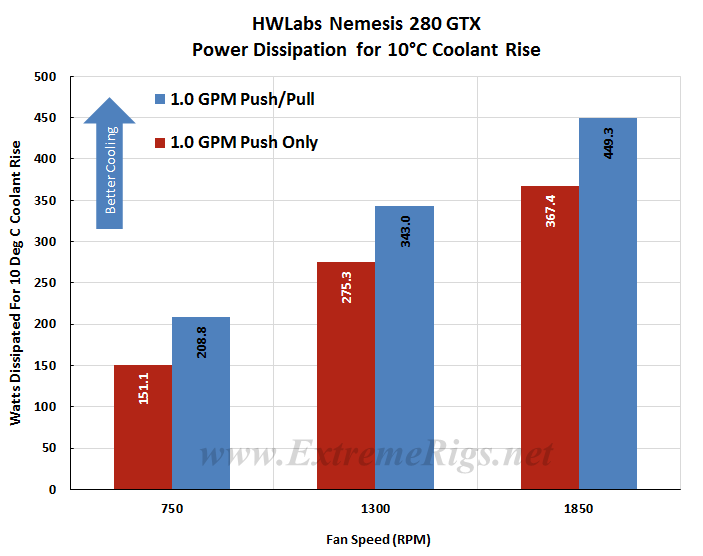 The average difference between Push Only and Push/Pull results at the same fan speed was ~22%, and ranged from ~27.5% at 750 rpm to 18% at 1850 rpm. As the percentages dropped considerably with increasing fan speeds, it is a clear indicator that the Nemesis 280 GTX is effectively using the additional airflow for heat dissipation.
The average difference between Push Only and Push/Pull results at the same fan speed was ~22%, and ranged from ~27.5% at 750 rpm to 18% at 1850 rpm. As the percentages dropped considerably with increasing fan speeds, it is a clear indicator that the Nemesis 280 GTX is effectively using the additional airflow for heat dissipation.
This same data can now be plotted on a chart so that an end user can interpolate their own fan speed. Note again that the extrapolation of the curve is much more sensitive to error than in between the tested range.
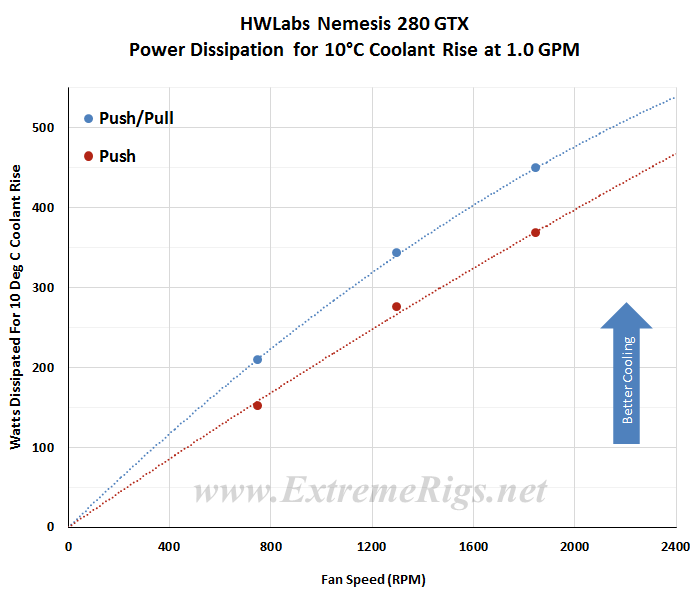 Results with reasonably straight lines such as these indicate there is plenty more cooling potential left in the Nemesis 280 GTX’s tank. That extra performance can can really only be unlocked with even faster rpms or fans with more static pressure. This will of course become excessively noisy, but it’s good to know that more performance is there if you wanted it, perhaps for a benching rig.
Results with reasonably straight lines such as these indicate there is plenty more cooling potential left in the Nemesis 280 GTX’s tank. That extra performance can can really only be unlocked with even faster rpms or fans with more static pressure. This will of course become excessively noisy, but it’s good to know that more performance is there if you wanted it, perhaps for a benching rig.
Now let’s analyze that data some more…
![]()








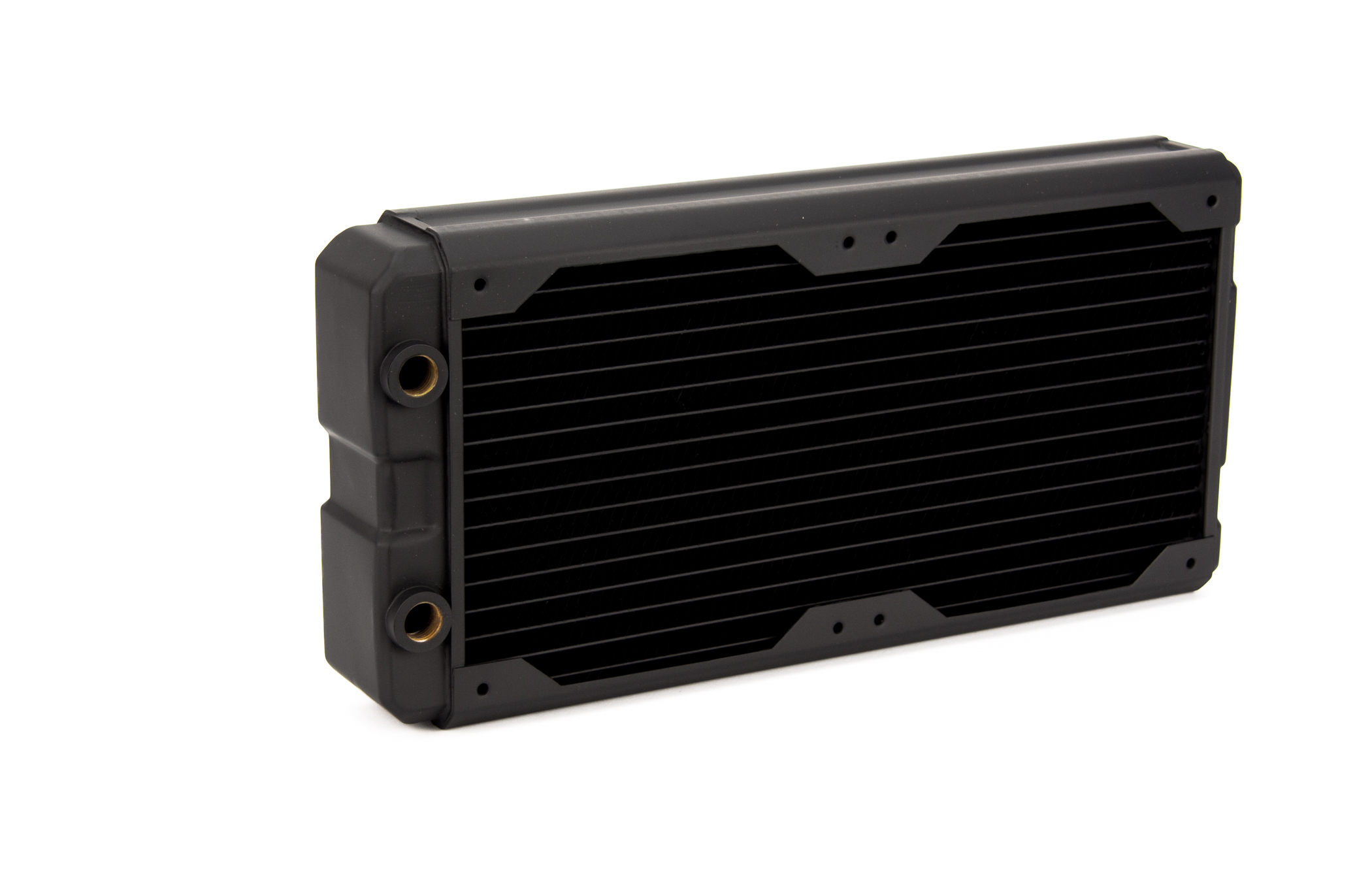
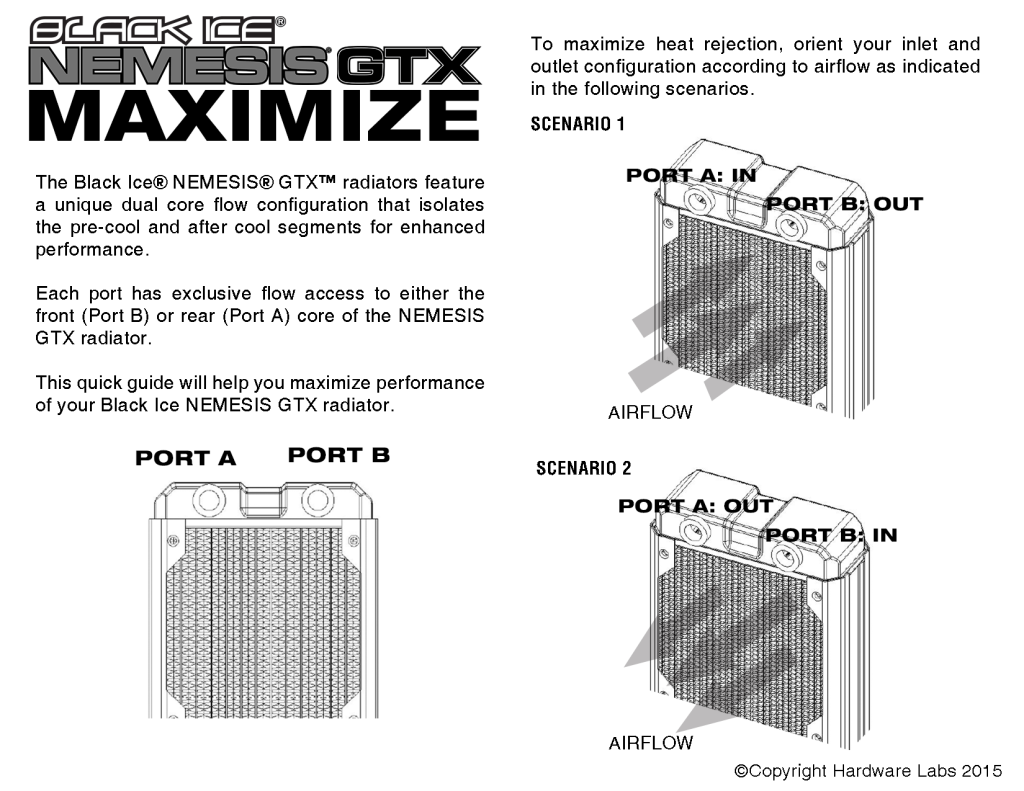
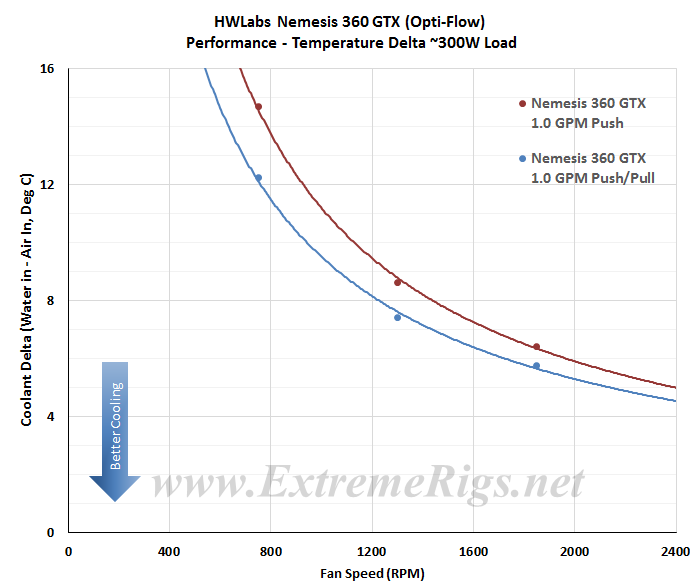
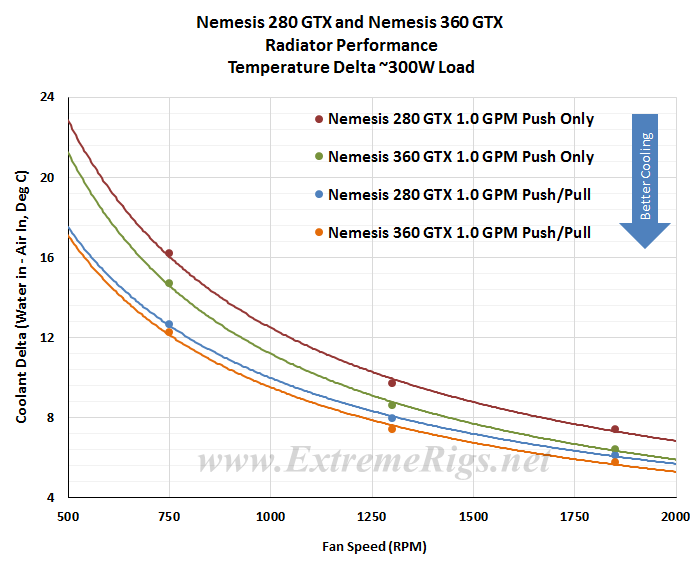



Why is such a thick rad not multiport? At least have 4 ports for easy top filling, and a temps sensor….. would help a ton.
Hey Drew – The Nemesis GTX rads have this front to back flow that makes adding alternative input/output ports quite hard because the end tank is split in half in the different way to a u-flow rad. Now that’s not to say it can’t be done with some tubes and more welding – but it would complicate things and push the price up. However ports could be added at both ends for functionality without being allowed for input/output – i.e. for filling/draining/temp sensors. This would give more functionality at least without requiring more complicated internal tubes and welding.
Comments are closed.